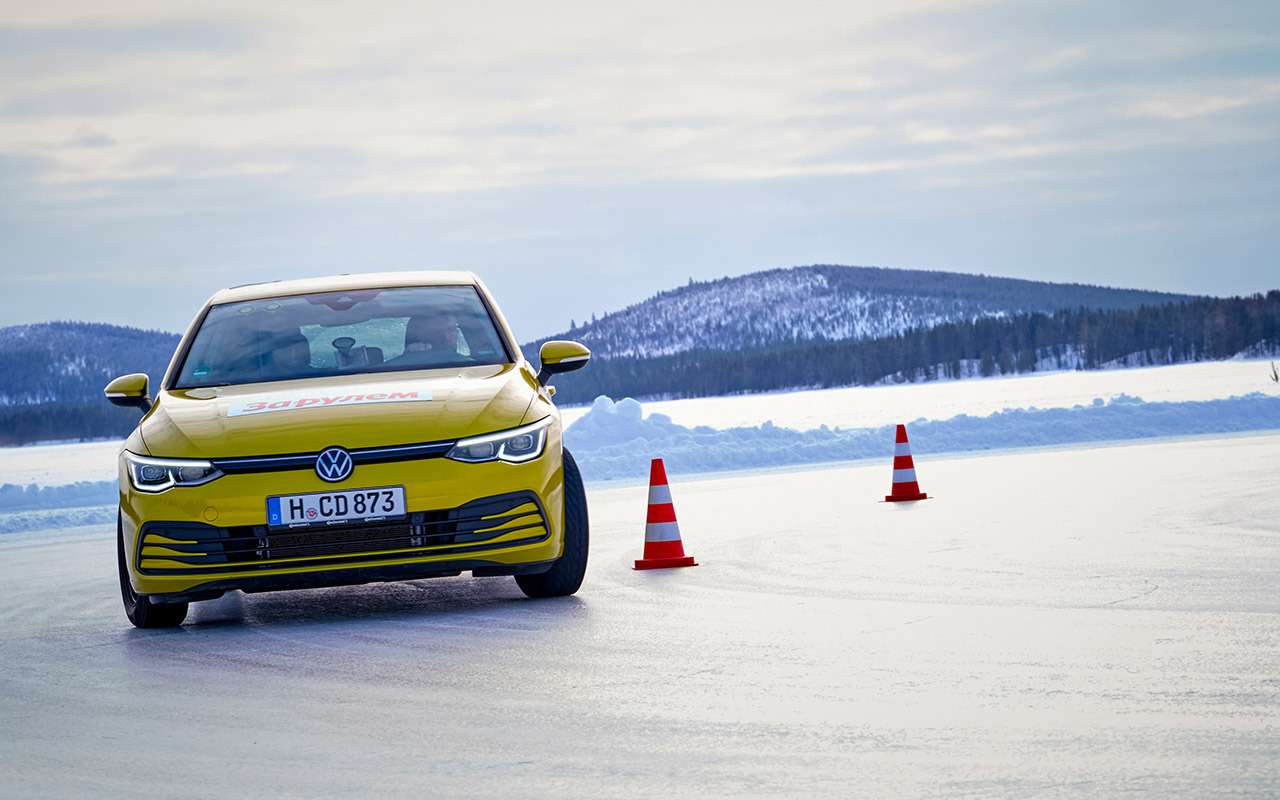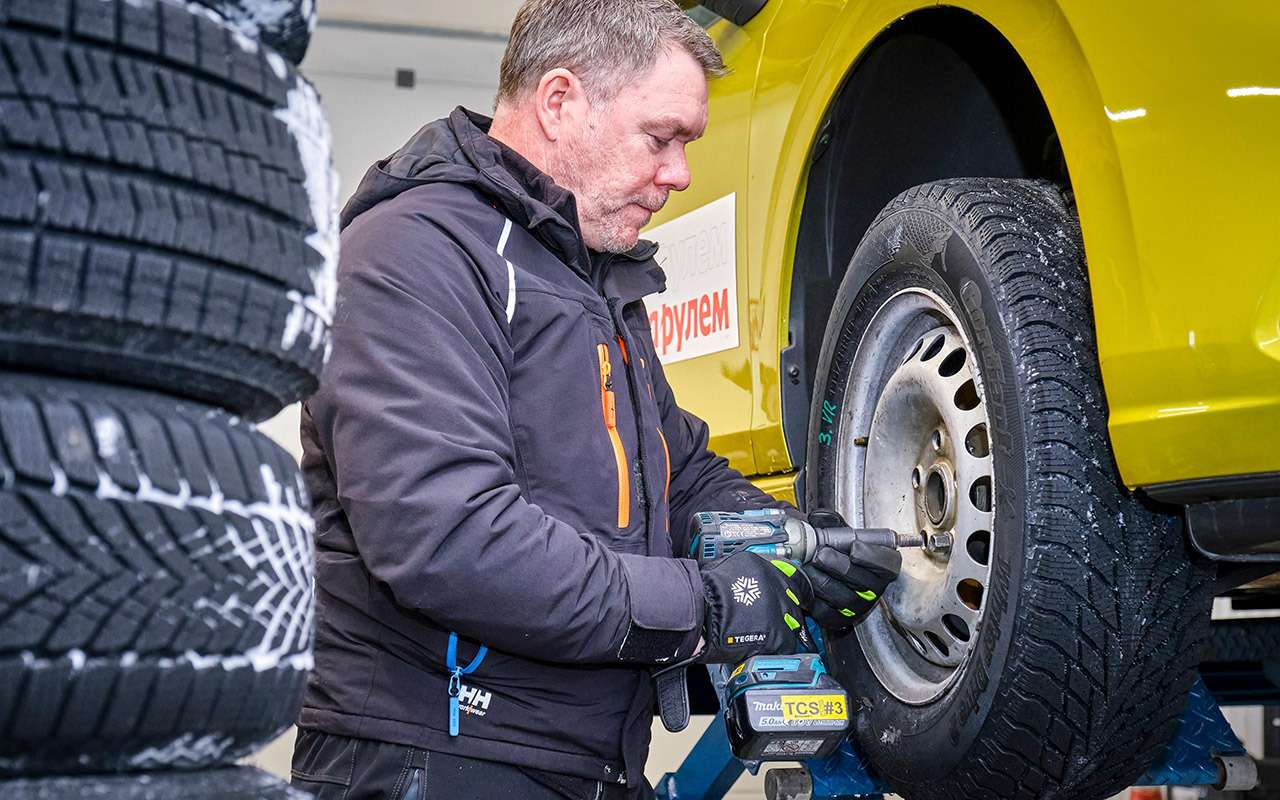advance warning
We did this test late last winter, when no one imagined how our reality would change. Nevertheless, all tested tires are still for sale – although perhaps not everywhere. More than half of the tested models were “welded” in Russia, so there is hope that they will not be lost even if the warehouses are empty. Yes, and it is always interesting to compare the goods of domestic brands with eminent imports. Therefore, we have not excluded from the protocols the tires of those brands that have to some extent frozen their activities in Russia.
rivals
Theoretically, the most interesting product is a novelty Nokian Hakkapeliitta R5, which replaced the “third” model. However, these tires were made not in the Russian, but in the Finnish factory of the brand. And in general, Nokian flagships at the time of their appearance on the market are often distinguished by a high price tag: they charge 8,500 rubles for one tire.
About 500 rubles cheaper is far from new Bridgestone Blizzak Ice (Russia), although for some reason it is presented as a novelty on the manufacturer’s website. Multiple winners of our tests, Continental Viking Contact 7 Made by Kaluga, they offer a thousand times cheaper than the eternal Finnish competitor. No less famous Goodyear UltraGrip Ice 2 (Poland) and Pirelli IceZero FR (Russia) can be bought for about six thousand rubles.
Almost a thousand cheaper Nordman RS 2 (Russia), Nokian’s “second-line” product. Chinese Nankang Ice Assets Ice-1 sell even cheaper, for 4300 rubles. And the most attractive price tag (4100 rubles, two times lower than the Finnish novelty) pleases the original domestic product – Cordiant Winter Drive 2.
To make the test conditions as lifelike as possible, test sets of tires are stored in the cold.

Where tested: Arvidsjaur – Gislaved
We conducted the main tests in February 2022 on the ice and snow roads of the Arctic Falls test site near the town of Arvidsjaur in Swedish Lapland at an air temperature of -1 … -12 ° C. In the south of Sweden near the town of Jislaved asphalt tests were carried out in April at +5…+8 °C.
Volkswagen Golf once again became the transport vehicle: we are not overjoyed with its transparent handling and strong brakes.
The measurement results were recorded by the professional, highly accurate Racelogic Vbox complex, which works with GLONASS and GPS satellites.
In all “white” tests (that is, on snow and ice), we traditionally checked the surface condition, started with exercises with “basic” tires and returned to that no later than every 2-3 test sets.
on ice
Ice is the most slippery and dangerous surface on a winter road. It is especially difficult for friction clutches to cling to him. Therefore, we will first check the “ice” properties of tires.
Let’s start by comparing longitudinal traction by determining the acceleration time with the traction control engaged (0–20 km/h) and the braking distance with ABS (20–5 km/h).
The only leader in both acceleration and braking is Continental. Worst of all longitudinally, Nankang holds the ice – it speeds up and slows down 11% weaker.
Let’s evaluate now transverse grip, based on the results of measuring the time of passing a circle with a diameter of 27 m. On it, the Hakkapeliitta R5 tires have the best time, with a confident distance of more than 10% from the nearest pursuers. The gap to the outsider of the exercise, Cordiant tires, is approaching 20% - if on Nokian the ice lap is completed in 12 seconds, then on domestic tires – 15 in total.
Judging the nuances manageabilitywe focus on the average driver who does not have the skills to drive on slippery roads.
The Golf showed impeccable behavior on Nokian and Pirelli tyres. The reactions of the car to the steering wheel are clear and predictable. At the limit, these tires provide a gentle slide out of the corner. In addition, the behavior of the car is safe – demolition or skidding occurs only in the event of a significant drop in speed or downright provocative actions by the driver.
The worst habits are Nankang tires. On them, the car reluctantly follows the wheel, giving the driver insufficient insight into the moment when the skid begins. And yes, it takes longer than expected.
in the snow
In the snow we will measure first efficiency in acceleration (0–40 km/h) and braking (40–5 km/h). The most powerful acceleration is provided by Continental, Nokian and Pirelli. Nankang accelerates weakest of all, although the gap is small – 5%. When braking, the gap between the best (Continental) and the worst (Nordman) is even smaller – just 4%, or just half a meter.
What about feelings? judge directional stability and behavior during smooth maneuvering at high speedhighlight Cordiant, Nokian and Pirelli – no complaints about them.
Nankang again gets the worst score. This is due to lazy responses to turning the wheel and insufficient information content, which creates uncertainty.
On a very twisty course, Continental joined the leading trio. And Nankang was still solo false: unstable behavior was added to the described shortcomings in the limit – demolition or skidding. It is not so easy to drive the car along the desired route.
passed the test extreme maneuver “realignment”, simulating a detour from a sudden obstacle, in the snow none of the participants managed it without complaints. At least claims to tires Continental and Nokian. But even on them, the behavior of Golf is not unambiguous enough – a tug on the steering wheel at the beginning of the detour causes a slight demolition of the front, which turns into a small slip when entering the adjacent lane.
The most difficult golf expert behavior was noted on Bridgestone, Goodyear, Nankang and Pirelli tyres. The first three, frankly, sin with a major imbalance between the drift at the entrance and the slip during the transfer. In addition, the transition to sliding is not felt well enough. And the Pirelli tires were downgraded due to excessive slippage that occurs after the rebuild.
In winter, even in big cities, road services don’t always have time to clean the roads during a snowfall, and driveways and parking lots covered with snow sometimes become a real test for patency. Continental, Nokian and Pirelli make their way on virgin snow with more confidence than the rest. They allow you to start, move forward and maneuver smoothly, and also come back easily if the car hits the snow with the front bumper. The hardest thing to move in snowdrifts is on Bridgestone tires: they slip willingly into skid, lose traction and dig in. Retraction movement is inefficient, it is not easy to catch the moment of onset of skidding.
How the tires performed on the road, see the conclusions of the experts and the final assessment via this link.
Za Rulem experts tested not only Scandinavians, but also eight models of studded tires for crossovers. The test has been published in Za Rulem magazine no. 10/2022 and will be published on the website shortly. Come more often!
- Summary of tire tests “Behind the wheel” (2018-2021) – follow this link
- “Behind the wheel” can also be read in Yandex.Zen.
Za Rulem experts tested 8 winter friction tires 195/65 R15 for cars the size of Ford Focus or Kia Ceed — and even Lada XRAY. They took expensive and cheap Velcro models. The main intrigue: which is more profitable?





